
How to Choose the Best Wine Fridge
As a restaurant or bar owner, investing in a wine fridge is essential for maintaining the quality and integrity of your wine collection. Wine refrigerators are specifically designed to store and preserve wine at the optimal temperature and humidity levels. By keeping your wines stored correctly, you can ensure that they age gracefully and retain their flavor profiles. Below, we cover the most important aspects of wine refrigeration, including the different types of wine fridges and how you can choose the best unit for your establishment.
Shop All Commercial Wine Refrigerators
Looking to add a new wine fridge to your restaurant, bar, tasting room, or event venue? Finding the right one doesn't have to be challenging. There are just a few questions to ask yourself as you shop.
How Much Are You Storing?
The amount of wine you are storing is going to affect your choice. Different refrigerators have different capacities and types of shelving that affect how much wine they can hold. Something else that will affect the type of cooler you need is the length of time you will be storing the wine. If you will be storing a lot of wine or keeping bottles for long periods, you may want to consider building a complete wine cellar rather than relying on a series of smaller wine fridges.
- Bottle Capacity: Wine fridges are available with capacities ranging from just a dozen bottles to nearly 300 bottles. When deciding on one for your business, think about how much capacity you need now, and be sure to leave some room for your business to grow over the next several years.
- Type of Shelving: Some types of wine fridges are designed to hold bottles horizontally while others are not. When you are choosing your wine fridge, keep in mind that bottles with natural corks should be stored horizontally if they're going to be kept for long periods. If your preferred vintages typically have metal caps or rubber corks, this is not as important.
What Types of Wines Are You Storing?
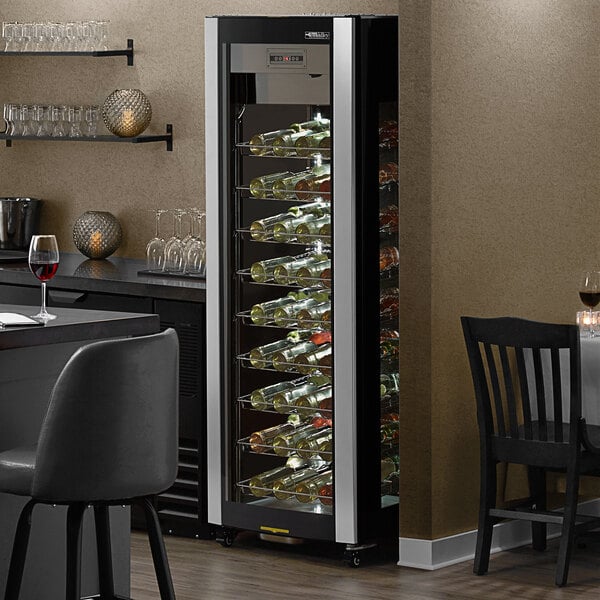
Different types of wine have different ideal storage temperatures. Because of this, you'll want to make sure the unit you buy will accommodate the types of wine you serve.
If you only serve a small selection of wines or your business keeps just a few bottles on hand, 55 degrees Fahrenheit will work for most types of wine if the temperature stays consistent.
- Number of Zones: Decide whether you need the versatility of multiple zones or the consistency of a single-zone unit.
- Temperature Range: Make sure that the temperature range of the unit you pick will suit your wine reserves.
- Type of Cooling System: Some high-end wine fridges use quiet thermoelectric cooling systems that cool the cabinet without vibrations. Most units will use a refrigeration system with a compressor. The type you choose will depend on the investment you are willing to make and the amount of ambient noise you can tolerate.
When selecting a wine fridge for commercial use, it is important to consider the different types available to suit your specific needs. Commercial wine refrigerators come in various styles, each designed for different purposes. Understanding the types of commercial wine refrigerators available can help you make an informed purchasing decision for your business.
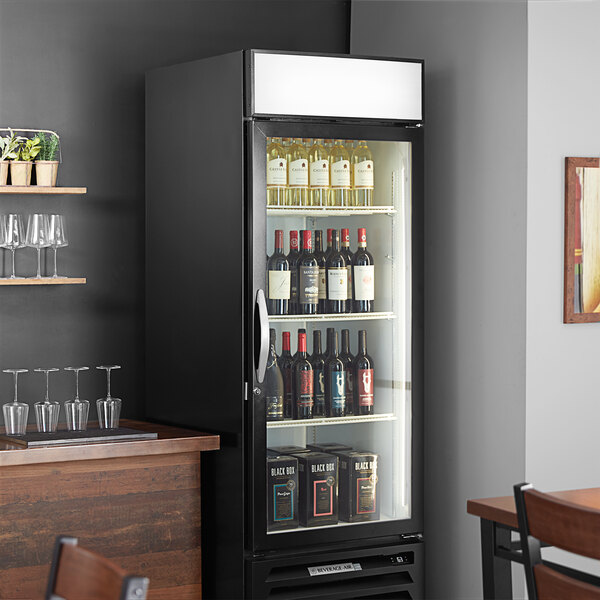
Wine Merchandisers
These refrigerators are designed to display a large quantity of wine bottles, making it easy for customers to browse and select their preferred bottles. Wine merchandisers often feature glass doors and interior lighting to showcase the bottles effectively.
- Ideal for retail environments such as wine shops or grocery stores
- Available in different sizes to accommodate various storage capacities
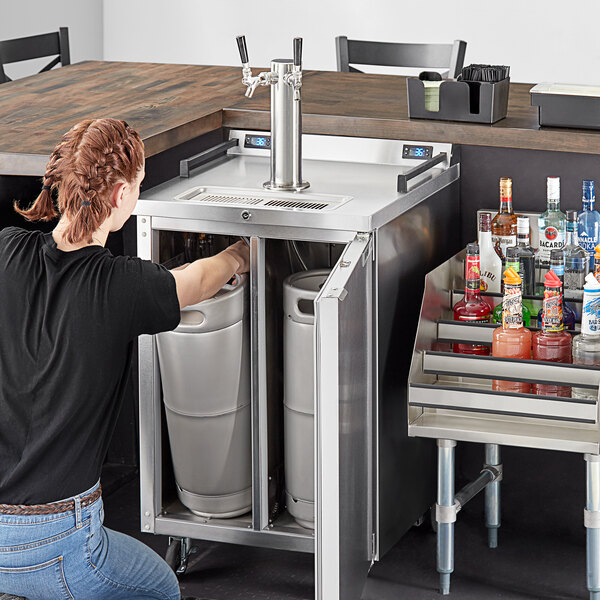
Wine Dispensers
Draft wine dispensers or wine-on-tap dispensers look and work like beer dispensers but are modified for use with wine. They utilize refrigeration systems that can hold temperatures more appropriate to wine, and all line and tap components are designed to handle the acidity of wine.
- Ideal for large event venues or stadiums
- Pours quickly, allowing for expedited service

Undercounter Wine Fridges
Undercounter wine fridges are compact units that can be installed under countertops or in tight spaces. They come in various sizes and styles to fit different storage needs and aesthetic preferences.
- Ideal for establishments with limited space, such as small bars or restaurants
- Helps keep wine bottles easily accessible for staff
A separate cooler for your wines may seem like an unnecessary investment, but the truth is that standard refrigerators can harm your wines during storage. A wine cooler fridge on the other hand protects your wine collection and lets it mature at the proper rate. Discover some of the key features of wine fridges that protect your wine inventory:
- Temperature - Standard refrigerators bring food and beverages down to below 41 degrees Fahrenheit quickly, but wine refrigerators cool bottles more gently. To store wine properly, wine refrigerators also hold slightly higher temperatures as low as 40 and as high as 65 degrees Fahrenheit.
- Humidity - Wine refrigerators are designed to maintain proper humidity so that corks do not dry out and bottle labels do not become damaged. While standard refrigerators use dry air, wine refrigerators keep the air between 50 and 80 percent humidity.
- Vibration - Too much movement can harm your wine. Standard refrigerators tend to use refrigeration systems that cause a lot of vibrations as the compressors cycle on and off. Wine refrigerators are available with thermoelectric cooling systems or special anti-vibration systems to eliminate this problem.
Wine Fridge vs Wine Cooler
Wine fridges are specifically designed to store wine for long-term aging. These units are equipped with precise temperature controls that allow you to maintain a constant temperature ideal for aging your wines. Additionally, wine fridges usually have humidity controls to prevent corks from drying out and to ensure the proper storage conditions for your bottles.
On the other hand, wine coolers are more versatile and are ideal for short-term storage and serving purposes. These units are designed to chill your wines to the perfect serving temperature quickly. Wine coolers are great for keeping your whites and roses at the ideal temperature before serving, making them a popular choice for restaurants and bars.
If you are looking to store more than one type of wine, a dual-zone unit might be just what you need.
What Is a Dual-Zone Wine Fridge?
The interior of a dual-zone wine fridge is separated into two compartments that can be controlled independently. This means you can control the temperature and humidity in each compartment separately. Store reds in one compartment and whites in the other. If your wine list covers a variety of vintages and types of wines or higher quality wines, then you may need the versatility of dual-zone units.
Dual-Zone vs Single-Zone Wine Fridge
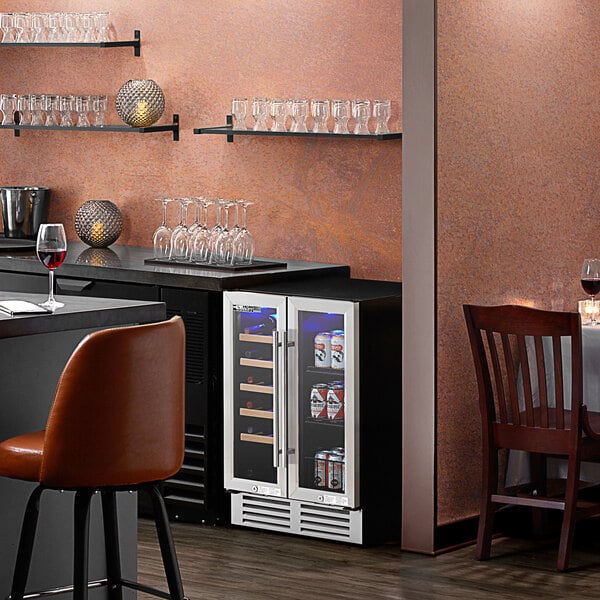
A dual-zone wine fridge allows you to store multiple types of wines without needing several different wine refrigerators. Should you only need to store a small number of bottles or primarily serve a single type of wine you may not need multiple zones. A single-zone wine fridge can often work for different types of wine if it maintains a consistent 55 degrees Fahrenheit. A single-zone unit can be less expensive, too.
What Temperature Should a Dual-Zone Wine Fridge Be Set At?
For a dual-zone wine fridge, the upper zone is typically designed for white wines and sparkling wines, while the lower zone is ideal for red wines. The recommended temperature range for the upper zone is between 45 degrees Fahrenheit and 55 degrees Fahrenheit, which is cooler than room temperature but not as cold as a standard refrigerator. In the lower zone of a dual-zone wine fridge, the temperature should be set between 55 degrees Fahrenheit and 65 degrees Fahrenheit. Red wines are best stored at slightly warmer temperatures than white wines to bring out their full flavor profiles.
When selecting a wine fridge for your commercial establishment, it's essential to consider the various features that can enhance the functionality and efficiency of the unit. Below we've listed some key features to look for:
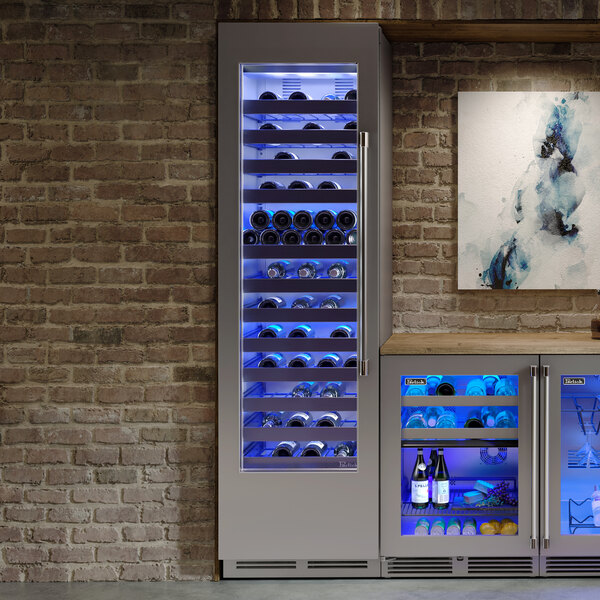
- LED Lighting - LED lights emit minimal heat, which helps maintain a consistent temperature within the fridge. Additionally, LED Lighting is energy efficient and provides ample illumination to showcase your wine collection.
- Locking Cabinet - For establishments that prioritize security and control access to their wine inventory, a wine fridge with a locking cabinet is a must-have feature. This ensures that your valuable wine bottles are protected from unauthorized access and tampering, giving you peace of mind.
- Field-Reversible Doors - The flexibility of having field-reversible doors on your wine fridge allows you to customize the unit to suit your space and workflow. This feature enables you to adjust the door swing direction based on the layout of your establishment, making it easier to access and organize your wine bottles efficiently.
- Energy Star Qualified - Choosing an energy-efficient wine fridge not only helps reduce your operational costs but also minimizes your establishment's environmental impact. Look for wine fridges that are Energy Star qualified, as they are designed to consume less energy while still delivering optimal performance, making them a sustainable choice for your business.
In addition to selecting the right wine fridge for your establishment, utilizing wine storage accessories can further enhance the preservation and presentation of your wine collection. These accessories are designed to maintain the quality and flavor of your wines, ensuring that each bottle is enjoyed to its fullest potential.
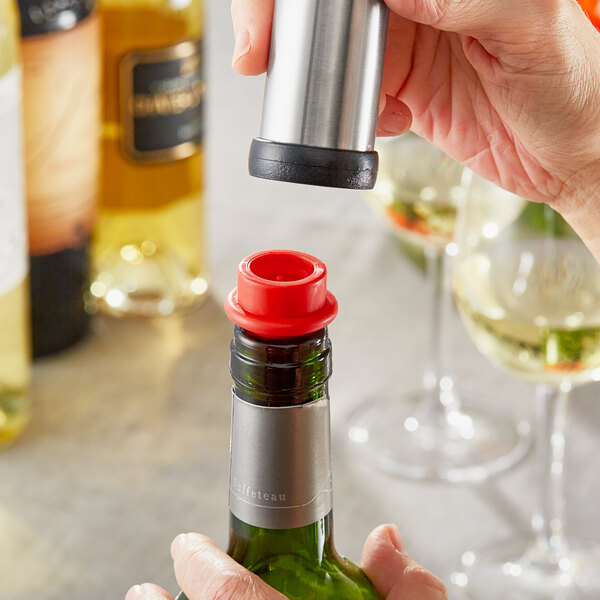
Vacuum Stopper Systems
Vacuum stopper systems utilize a vacuum pump to remove air from opened wine bottles, slowing down the oxidation process and preserving the wine's freshness. These stoppers are easy to use and can help maintain the quality of your wines for an extended period.
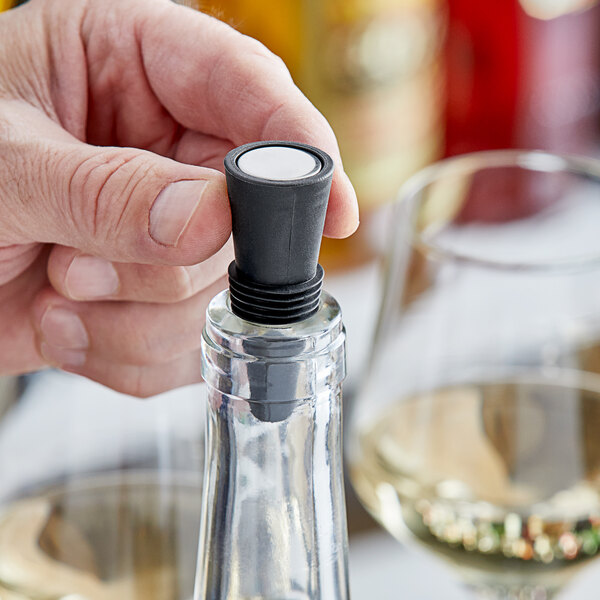
Reusable Wine Stoppers
Made from materials such as silicone or stainless steel, these stoppers provide a tight seal to keep air out and preserve the wine's flavor and aroma. Reusable wine stoppers seal the top of a wine bottle without needing the original cork, keeping wine for a few days after it's opened.
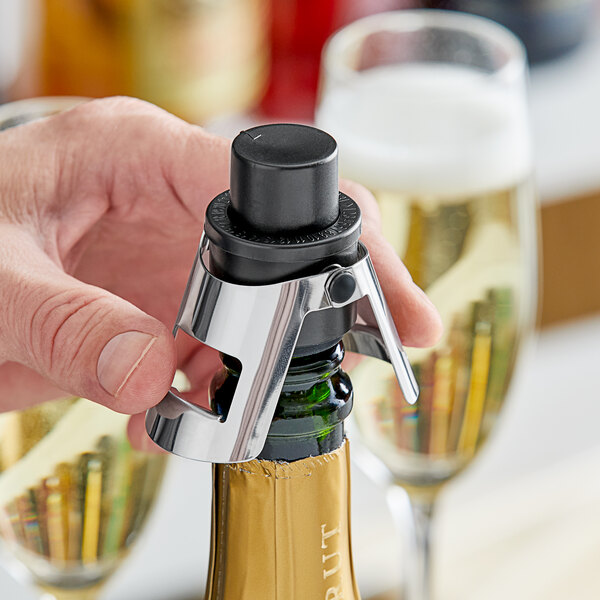
Champagne Stoppers
Champagne stoppers are specifically designed to preserve the effervescence of sparkling wines and champagnes. These stoppers feature a secure seal to maintain the wine's carbonation and prevent it from going flat, ensuring that each glass of bubbly is as lively and refreshing as the first.
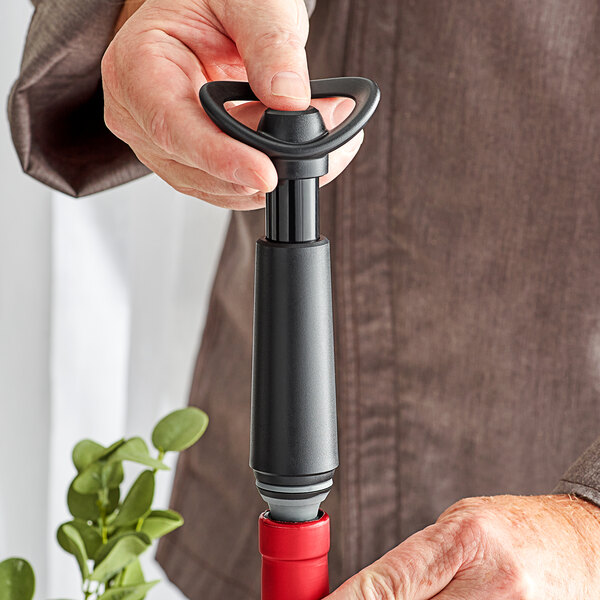
Wine Preservation Systems
Wine preservation systems use inert gases such as argon to create a protective barrier between the wine and oxygen, preventing oxidation and preserving the wine's flavor. These systems are ideal for establishments that serve wine by the glass, allowing you to extend the shelf life of opened bottles and reduce waste.
After a bottle of wine has been opened, it can typically last between 2 to 5 days depending on the type of wine and how you store it. For all types of wine, it's important to keep the bottles sealed tightly and stored at a consistent temperature in the fridge. Fluctuations in temperature can accelerate the aging process and negatively impact the taste of the wine.
How Long Does White Wine Last in the Fridge?
Once opened, a bottle of white wine can last for about 3-5 days when stored in the refrigerator. However, it's crucial to re-cork the bottle tightly and ensure it is stored properly to minimize oxidation.
How Long Does Red Wine Last in the Fridge?
Once opened, red wine can last for about 5 days in the fridge. This timeframe can vary depending on the type of red wine and how it is stored.
How Long Does Sparkling Wine Last in the Fridge?
Sparkling wines, such as Champagne or Prosecco, should be consumed within 1-3 days of opening when stored in the fridge. The effervescence of these wines makes them more sensitive to oxidation, leading to a quicker loss of flavor and fizziness.
Related Resources
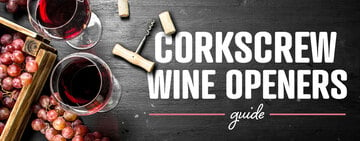
A Guide to Corkscrew Wine Openers
Corkscrews and wine openers are necessary tools for any foodservice establishment that serves bottles of wine . Manufacturers design different types of corkscrews to open particular corks and handle high-volume applications. In this guide, we'll go over the types of wine openers and the important factors you need to consider before purchasing one. Shop All Corkscrews
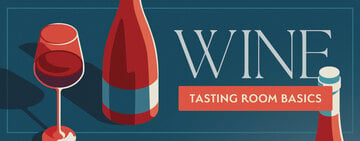
Wine Tasting Room Basics
Wine tasting rooms are essential for wineries looking to provide a unique and engaging experience for their customers. These spaces allow wine enthusiasts to sample a variety of wines, learn about different grapes and winemaking techniques, and gain a deeper appreciation for the art of wine. With a carefully curated wine list , knowledgeable staff, and a welcoming atmosphere, wine tasting rooms play a crucial role in building brand loyalty and increasing sales for wineries. Shop All Wine Tasting Room Supplies Click any of the tips to learn about wine tasting rooms: What Is a Tasting Room? Benefits of a Wine Tasting Room How to Start a Wine Tasting Business How Does Wine Tasting Work? How to Taste Wine What Is a Wine Club? What Is a Tasting
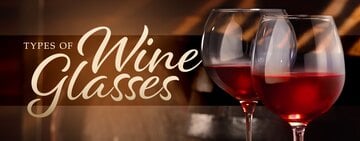
Types of Wine Glasses
Whether sweet or dry, white or red, robust or light, wine requires precise serving procedures to reach its full flavor potential. Mastering the art of serving and pouring wine and holding the glass correctly creates a positive experience for wine enthusiasts and first-time wine tasters alike. In addition to proper serving temperatures, each type of wine requires a specific style of glass for service to best enhance the aromas, flavors, and overall experience of the wine. To best enjoy your wine collection, browse through the links below to choose the ideal wine glass for your needs. Shop All Wine Glasses Use the following links to learn more about different types of wine glasses: Red Wine Glasses White Wine Glasses Red Wine Glasses Burgundy
- Topics 1346
- Industrial 55
- Troubleshooting Guides 21
- Restaurant Management 128
- Bar Management 55
- Catering Tips 35
- Bakery Management 42
- Food Trucks & Concessions 49
- Advertising & Marketing 37
- Eco-Friendly Tips 11
- Facility Layout & Design 41
- Coffee Shop Tips 28
- Installation & Maintenance 51
- Janitorial & Pest Control 30
- Safety & Sanitation 88
- Startup Tips 104
- Menu Design 10
- Kitchen & Cooking Tips 81
- Hospitality Management 23
- Pizza & Sandwich Shop Tips 36
- Smallwares 37
- Food Prep 88
- Tabletop Items 17
- Disposables 22
- Calculators & Tools 6
- Consumables 52
- Warewashing & Laundry 18
- Cooking Equipment 90
- Food Storage & Refrigeration 51
- Beverage Equipment 34
- Office Supplies 6
- Resource Type
- In-Depth Articles272
- Buying Guides296
- How-Tos93
- Product Reviews77


